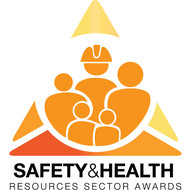12 finalists have been announced for the 2018 Safety and Health Resources Sector Awards.
| Date: | Monday, 13 August 2018 |
|---|
Twelve finalists have been selected for the 2018 Safety and Health Resources Sector Awards, recognised for their practical solutions and innovations to reduce risk and protect staff.
Selected from 24 nominations, the finalists have demonstrated a commitment to placing the safety of their staff as a priority.
The Department of Mines, Industry Regulation and Safety’s (DMIRS), Director of Mines Safety, Andrew Chaplyn has been impressed with the quality of the submissions for the awards.
“A positive safety culture is essential in all businesses and it is encouraging to see the resources sector improving its processes, equipment and attitudes to drive safer operations and lift industry standards,” Mr Chaplyn said.
“These projects have been carefully assessed against five criteria including identifying the problem and solution, benefits, innovation and the potential for the solution to be transferred and shared with the broader industry.
“Congratulations to the 12 finalists on making it this far and for sharing their learnings with the department and the broader industry.”
The winners will be selected by a judging panel made up of representatives from DMIRS, industry and the Association of Mining and Exploration Companies, who will assess each project against the assessment criteria.
As part of the department’s Resources Sector Awards for Excellence, the Safety and Health Resources Sector Awards will be presented at the annual awards ceremony on Thursday 25 October 2018 along with the Community Partnership Resources Sector Award and the Golden Gecko Award for Environmental Excellence.
Information on the Safety and Health Resources Sector Award is available on the DMIRS website at www.dmirs.wa.gov.au/excellenceawards
The finalists are:
Engineering
Improving Electrical Safety of High Voltage Switchgear, Rio Tinto Iron Ore
Rio Tinto Iron Ore’s online partial discharge solution has enabled employees to take a more holistic view of the process of risk reduction across its extensive fleet of high voltage switchgear assets. With the ability to predict failures, resources can be better allocated to corrective and preventative actions that will mitigate the identifiable risks, which include arc flash and hazardous gas exposure.
SkyHook MKIV Mobile Fall Arrest Anchor System, Fremantle Commercial Diving
The SkyHook MKIV (SkyHook) is a unique truck mounted, mobile rated overhead anchor point for two people, designed and engineered to allow safe working at heights, or the rescue of an injured person from a water tank, in situations where no other suitable anchor point and/or rescue equipment is installed on an asset.
Lightning Protection System, Roy Hill Holdings
The Lightning Protection System (LPS) is an innovative, unique and long-term solution to a frequent hazard in the mining industry. The LPS benefits people by allowing them to safely move around facilities during lightning red alerts, by capturing lightning strikes at preferred points then redirecting the energy to a grounding system.
Elimination of Chlorine Gas from Rio Tinto Pilbara Villages, Rio Tinto
Rio Tinto Iron Ore identifies that gas chlorinators were still in use at the main potable water treatment systems at their accommodation villages. To eliminate the risk of exposure to chlorine gas for both personnel maintaining potable water at the village and individuals residents, an onsite Electrolytic Chlorination system was successfully installed at four facilities.
Spring Leaf Pack Hoist, Mineral Resources Limited (MRL)
MRL identified the need for an engineering design to eliminate the risk of musculoskeletal injuries and significantly reduce impact injuries to hands and fingers associated with the task of removing and replacing Leaf Spring Packs on their extensive range of multi-combination and super-quad Road Train trailers.
Elimination of Working Under a Suspended Load, Rio Tinto
Any crane lifting operation where there is a risk of personnel being exposed to a suspended load requires effective controls to mitigate any potential risk to our personnel. An engineer designed guide system is a critical control initiative that successfully eliminates the requirement for an operator or maintainer to be working in proximity to a suspended load in the drop zone during this task.
Systems and People
Driving down injuries and incidents in road train haulage, Atlas Iron
There are many factors involved in ensuring personnel are fit for work and free from fatigue. The holistic approach taken between Atlas and Rivet has shown a considered, well-structured plan that has had measureable benefits with improved outcomes to the drivers, community and companies.
Reduction of sprains and strains in mining industry, Kalgoorlie Consolidated Gold Mine
Redesigning the storage racks for steel rods and repositioning hydraulic fluid storage is a simple, cost effective engineering solution that has had a huge impact on minimising sprains and strain injuries to staff, improving not only the health and wellbeing of employees but also increasing production and contributing to the success of the business.
Emergency Response Exposure Reduction Initiative – BARRIO, Rio Tinto Iron Ore
Best practice, Airborne Contaminants, Risk, Reduction, Initiative and Operation, or ‘BARRIO’ is an effective and practical solution to mitigate the risk of exposure to fire based atmospheric contaminants that have been identified as health risks.
Newmont Boddington Gold Health and Safety Representative Mentoring Program, Newmont Mining
The HSR mentoring program is designed to support Health and Safety Representatives, providing education on their legal responsibilities and requirements, as well as equip them with skills to successfully engage their work groups and the workforce. The program delivers 11 topics and workshops over 11 months.
Controlling Energy Sources – Mobile Maintenance, Fortescue Metals Group
A safety package that is designed for upskilling and keeping mobile maintenance workers in control of potentially damaging stored energy.
Reducing exposure to working on live equipment, Rio Tinto Iron Ore
An isolation incident in 2015 at Rio Tinto Iron Ore Ports Dampier highlighted the risk of working on live equipment associated with mirror-image conveyors with multiple access points. Several mitigating measures were implemented for working among mirror-image conveyors including a human factors approach, and an easily deployed, low cost, sustainable method of plant identification.

